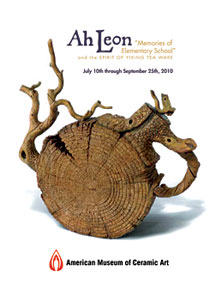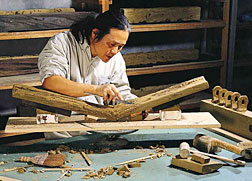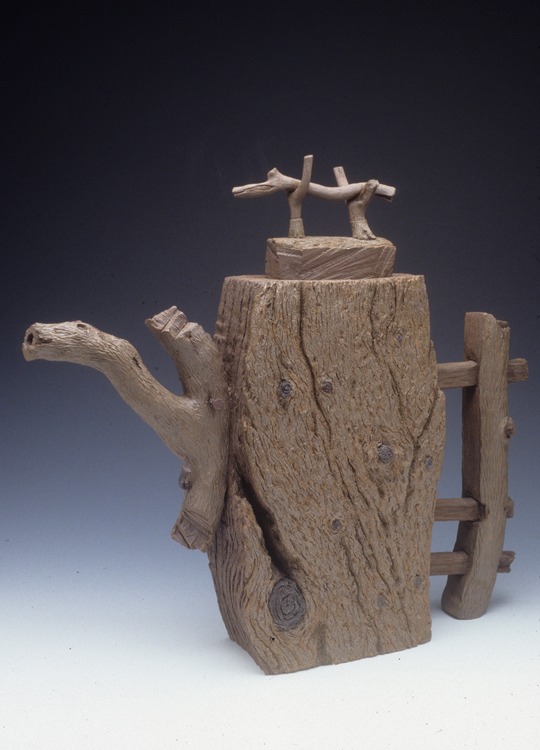
July 10–September 25, 2010
Grand Opening Reception: July 10, 6-9 pm
AMOCA presents Ah Leon, an international contemporary artist from Taiwan who merges Chinese Yixing traditions with his signature wood-textured trompe l’oeil style to form illusionistic installations. Originally trained as a painter at the National Academy of Fine Art in Taipei, Ah Leon became a master of the traditional Yixing style teapot: hand-built and unglazed in the prized purple clay stoneware from the southern part of Jiangsu Province in East China, where Chinese teapot production began in the Song Dynasty (960-1279 CE).

Ah Leon is well known for his installation of Bridge, his most famous 68-foot handmade clay structure. His latest work on exhibit at AMOCA, Memories of Elementary School, is an installation of dilapidated school desks created with his wood-like stoneware technique. Inspired by rustic Taiwanese wooden furniture, Ah Leon comments that “wood, much like clay itself, tells many stories like an ancient footprint.” Ah Leon’s installation emphasizes the surrealism of what it’s like to return to the past with an adult perspective. The desks personify the friends of his past: people from his home who have returned after 30 or 40 years to find the desks have aged or bear the same marks as those who once occupied them.
We spent a lot of time sitting on these kinds of chairs and desks. We used them to write, draw, eat, sleep, dream, play, and also to cheat! We miss the good times we had when growing up and realize it was the most enjoying time in our life. Now the furniture looks old and is rotting away, mimicking the way all of us become old with wrinkles. But when my friends reunite with these desks and chairs, they find and remember; their shadows are still there. Here in this installation, I have preserved them in clay.
– Ah Leon
The Spirit of Yixing Tea Ware is part two of the exhibition, curated by AMOCA’s Assistant Curator Karen Crews Hendon. The Spirit of Yixing Tea Ware displays 100 Yixing teapots from the 18th century to the present. Some of these unglazed teapots were made to look like gourds, eggplant, or bamboo, and many have fanciful spouts and handles, often shaped to resemble dragons, frogs, or other transformative creatures. Interwoven with the ceramic teapots is the historic significance of tea culture, trade, and symbolism.
These traditional variations are juxtaposed against the work of Richard Notkin, a contemporary ceramic artist known for his series of unglazed stoneware teapots reminiscent of Yixing wares circa 1500 AD to the present. Notkin’s teapot sculptures are inspired by history, politics, and war. He consciously maintains a separate cultural identity, positioning his work as a vehicle for social commentary that “reflects the current dilemmas of our contemporary human civilization.” For over three and a half decades, his work has been exhibited internationally and is in numerous public and private collections, including the Metropolitan Museum of Art, New York; Smithsonian Institution, Washington, DC; Los Angeles County Museum of Art; Victoria and Albert Museum, London; and Shigaraki Ceramic Cultural Park, Japan. Notkin’s awards include three fellowships from the National Endowment for the Arts, as well as fellowships from the John Simon Guggenheim Memorial Foundation and Louis Comfort Tiffany Foundation.
